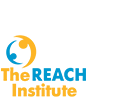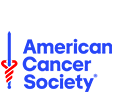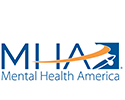Improving the Lives of Veterans with Liver Diseases
Last year, the Global Liver Institute (GLI) and the Department of Veterans Affairs (VA) announced a partnership to improve the lives of Veterans with liver disease. Through the collaboration, VA and GLI are providing educational materials and webinars to help increase Veteran awareness of liver disease, increase health care engagement of Veterans with a suspected or confirmed liver disease diagnosis, and ensure equitable access to information and care for Veterans from disadvantaged or underserved communities.
According to the VA, educating Veterans is a critical step toward preventing and improving care for liver disease. Current data suggests that more than 30 percent of Veterans receiving VA care have metabolic dysfunction-associated steatotic liver disease (MASLD, formerly known as non-alcoholic fatty liver disease), and VA is “determined to provide these Veterans with the world-class health care they have earned and deserved.”
Like other populations in the United States, Veterans are seeing rising rates of obesity, diabetes, and metabolic syndrome – conditions that if left untreated, can lead to the development of MASLD and MASH (metabolic dysfunction-associated steatohepatitis, formerly known as NASH). Increased rates of depression and mental health conditions among Veterans may make them even more vulnerable and less successful in addressing their liver disease.
“Liver diseases significantly affect both our active duty and veteran armed forces, and even have an impact on armed services recruitment and our national security,” said Donna Cryer, JD, founder and member of the Board of Directors of GLI. “It is our honor to help the military families who sacrifice so much to serve us and to do so in a way that advances the education, services, and messaging targeted to Veterans.”
Promoting Liver Health
GLI has long taken a leadership position in the MASLD and MASH communities. In 2017, it established the NASH Council (now the Fatty Liver Disease Council) to help communicate in plain English about the importance of liver health as a public health issue. It created the Advanced Advocacy Academy (A3) in 2017 for patients, caregivers, and others. A3 features training programs and advocacy opportunities, with a hallmark annual four-day Learning Experience providing comprehensive advocacy preparation each September.
GLI also offers a wide variety of educational materials, many of which were developed in conjunction with A3 members and military families. Among those materials is a Liver Health for Veterans YouTube Playlist.
“We are thinking strategically about how to integrate the perspective of Veterans across all of our channels, assets, and programs,” said Cryer. “Whether they engage with us on our website, social media accounts, or in person, they will be able to find easy-to-access and relevant information.”
Enhancing Relationships Between Doctors and Patients
GLI stresses that liver conditions are often misunderstood, mischaracterized, and stigmatized, resulting in under-diagnosis, under-treatment, and unnecessarily poor outcomes around the globe. Part of the issue, said Cryer, is that traditionally, liver health issues were siloed to the field of hepatology.
“Everyone should be talking about their liver health with their primary physician,” said Cryer. “There are multiple drivers for the accumulation of fat in the liver, so regardless of your leanness, diet, genetics, or lifestyle, liver health should be a normal part of the conversation, just like heart health is.”
Cryer praised the VA for the way they view liver health holistically and encourages other health systems to do the same.
“The VA has been on the cutting edge of addressing liver cancer and hepatitis C among Veterans,” said Cryer. “They were among the first health systems to conduct multidisciplinary tumor boards, for example. They understand the links between the environments Veterans live and work in, their lifestyles, and the development of fatty liver disease.”
GLI is working with individual VA hospitals to optimize doctor-patient interactions relating to liver health. Together, they are working to incorporate “smart phrases” into patients’ electronic health records (EHRs) and the My HealtheVet system, which provides tips and tools to help Veterans partner with their health care team and manage their health. Smart phrases are go-to phrases, recommendations, and responses that doctors can quickly apply when meeting with patients and charting their appointment. They are designed to help doctors quickly and accurately order diagnostic tests and develop treatment plans for fatty liver disease.
“The smart phrase model has been proven effective in the hepatitis C patient community and we want to replicate those results for the MASH community, especially now that there is a first-line treatment for the disease,” said Cryer.
Supporting Other Patient Populations at Risk for MASH
Cryer stressed that GLI’s support for MASH patients extends far beyond Veterans to other underserved patient groups and populations.
“All liver patients experience some form of stigma, discrimination, and barriers to care,” she said. “Those barriers can result in delayed diagnosis and initiation of treatment.”
Cryer pointed to the Black and Hispanic communities as an example and noted that these two patient groups tend to get diagnosed with MASH later than other groups, when their disease has already progressed to liver cancer or the need for transplant.
“There are wide disparities in insurance coverage, transportation access, and other social determinants of health that impede their access to primary care medical touchpoints,” she said. “In addition, the quality of those touchpoints is not always where it needs to be in terms of appointment length and the need to focus on other health issues, meaning the liver doesn’t always rise to the top of the discussion.”
Because the prevalence of MASLD is around 70 percent for people with diabetes, and diabetes is prevalent among the Black and Hispanic communities, GLI is working closely with diabetes advocates and endocrinology societies to expand the conversation around liver health.
“We’re also addressing the alarming rise of MASH among infants, children, and teens,” Cryer said. “It’s important for families to know that there are non-invasive diagnostic tests that eliminate the need for painful, and quite honestly frightening, biopsies.”
GLI’s Beyond the Biopsy program is dedicated to accelerating the acceptance and adoption of non-invasive diagnostics as an alternative to biopsy, which has been a barrier to success in getting patients diagnosed and appropriately linked to care. These non-invasive alternatives potentially provide more information than a biopsy, through their ability to assess changes throughout the liver, rather than only in the relatively small amount of liver tissue typically obtained from a biopsy.
GLI’s efforts and outreach, combined with the advent of non-invasive testing, has resulted in non-invasive testing replacing biopsy as the gold standard for MASH diagnosis. GLI also has worked closely with the American Board of Internal Medicine to change the rules around the number of biopsies a transplant specialist needs to perform to complete their fellowship, further influencing medical trainees to focus on non-invasive testing.
“We are incredibly excited about the role GLI has played in creating the infrastructure needed to address liver health head-on,” Cryer concluded.


















